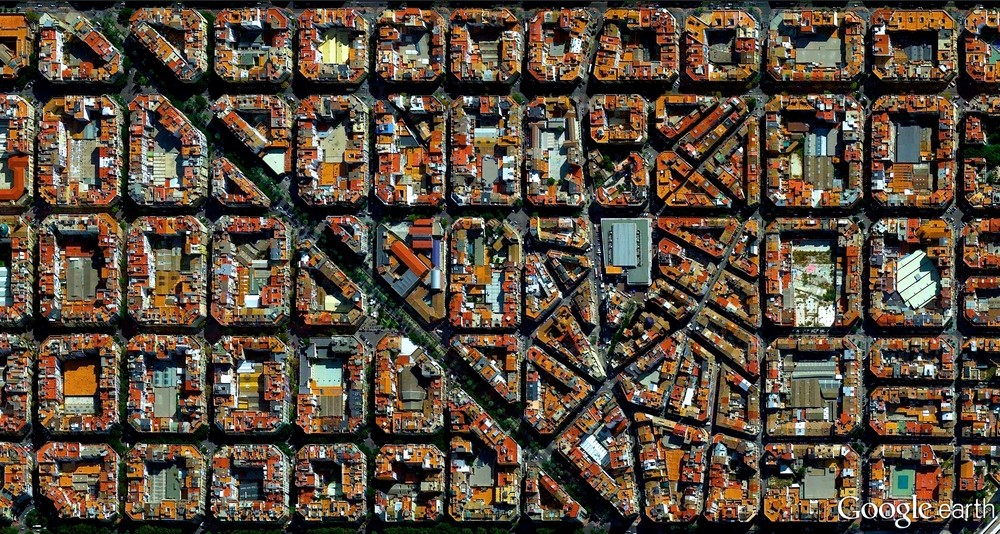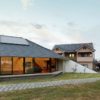Most modern cities tend to be designed for cars and other vehicular transport. The streets are crafted to suit their dimensions and requirements while pedestrians and bikers are pushed to the sides along narrow lanes and sidewalks. Shared public spaces are typically found only in parks and plazas.
The city of Barcelona is, however changing this notion with a unique approach to urban design that makes use of the Superblock Model.
L’Eixample district in Barcelona, Spain. Image Courtesy of DigitalGlobe
The idea takes a number of city blocks (9 in this case) and limits traffic passing through to local vehicles traveling at very low speeds, while buses and freight vehicles remain on the perimeter of the chosen area. This idea gives the city back to people and creates one-way loops (see the arrows on the green streets below) of bustling street life with commerce and culture while making the city significantly more walkable and sustainable.
The video shows how this is working out while an accompanying article by vox details the process and benefits of this approach.







